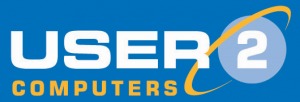With sustainability credentials ever more important to stakeholders, we look at how IT buyers can ensure that the green claims made by those in their supply chain can be trusted.
The Greenwashing Challenge
One of the main challenges buyers face is ‘greenwashing’ whereby supply chain companies may create a false impression about how sustainable they are in order to win business. Buying from a supplier that is found to be greenwashing will leave the buyer’s company open to questions about their own green claims, could lead to legal/regulatory problems, and reputational damage. It could also require the buyer’s company to revise their own emissions reduction or circular economy targets.
Some of the general warning signs of greenwashing in a supplier can include the use of vague or unclear terms e.g., ‘all natural’ or ‘eco,’ potentially misleading descriptions, the use of logos/labels that aren’t from accredited associations, and claims that don’t match up with sector-specific laws.
Ways That Sustainability Claims Can Bed Checked And Verified
Some of the many ways that IT buyers can check and verify the green credentials of supply chain companies include:
– Prepare and ask a series of questions e.g., what share of the energy they use is renewable? What are their lifecycle emissions figures? What verification of human rights in their supply chains do they have?
– Check claims against the UK government / Competition and Markets Authority (CMA) Green Claims Code (6 key points: https://greenclaims.campaign.
– Check whether the supplier’s data is published alongside their claim.
– Look at what (if any) voluntary standards they adhere to and what these standards really mean.
– Look for labels or logos on company literature / online / on products which identify them as environmentally friendly, and check annual reports, mission statements and website corporate social responsibility pages for details of the supplier’s environmental policies and practices.
– Check whether they adhere to sustainability models and guidelines e.g., factors of sustainability.
– Check with the list of businesses with sustainable practices held by trade associations e.g., the FSB and British Chamber of Commerce.
– Look them up in relevant directories e.g., World Fair Trade Association.
– Check sustainability disclosures e.g., climate related financial disclosures.
– Look at your suppliers’ suppliers i.e., tier 2, or tier 3 suppliers.
– Look for third-party verification e.g., finding out by asking questions or looking at company reports / published content to see if they’re signed up to the UN-backed Race to Zero, or whether they’ve adopted the Human Rights or Greenhouse Gas Protocols, and many others.
– Research what green initiatives the supplier belongs to or supports.
– Look for recognised, audited accreditation e.g., ISO 14001, or whether they are a member of an accredited ethical scheme such as Worldwide Responsible Accredited Production, Green Mark, and Green Accord.
What Does This Mean For Your Organisation?
The accuracy of a company’s own green claims are important from a truly ethical, legal/regulatory, and business perspective and one of the ways IT buyers can reduce the risk of their company suffering in those areas is due diligence in checking supply chain green credentials. Greenwashing is quite common so having a well-thought-out checking procedure in place, which includes asking the right questions can help IT buyers to make good choices which protect and validate their own company’s sustainability claims.




